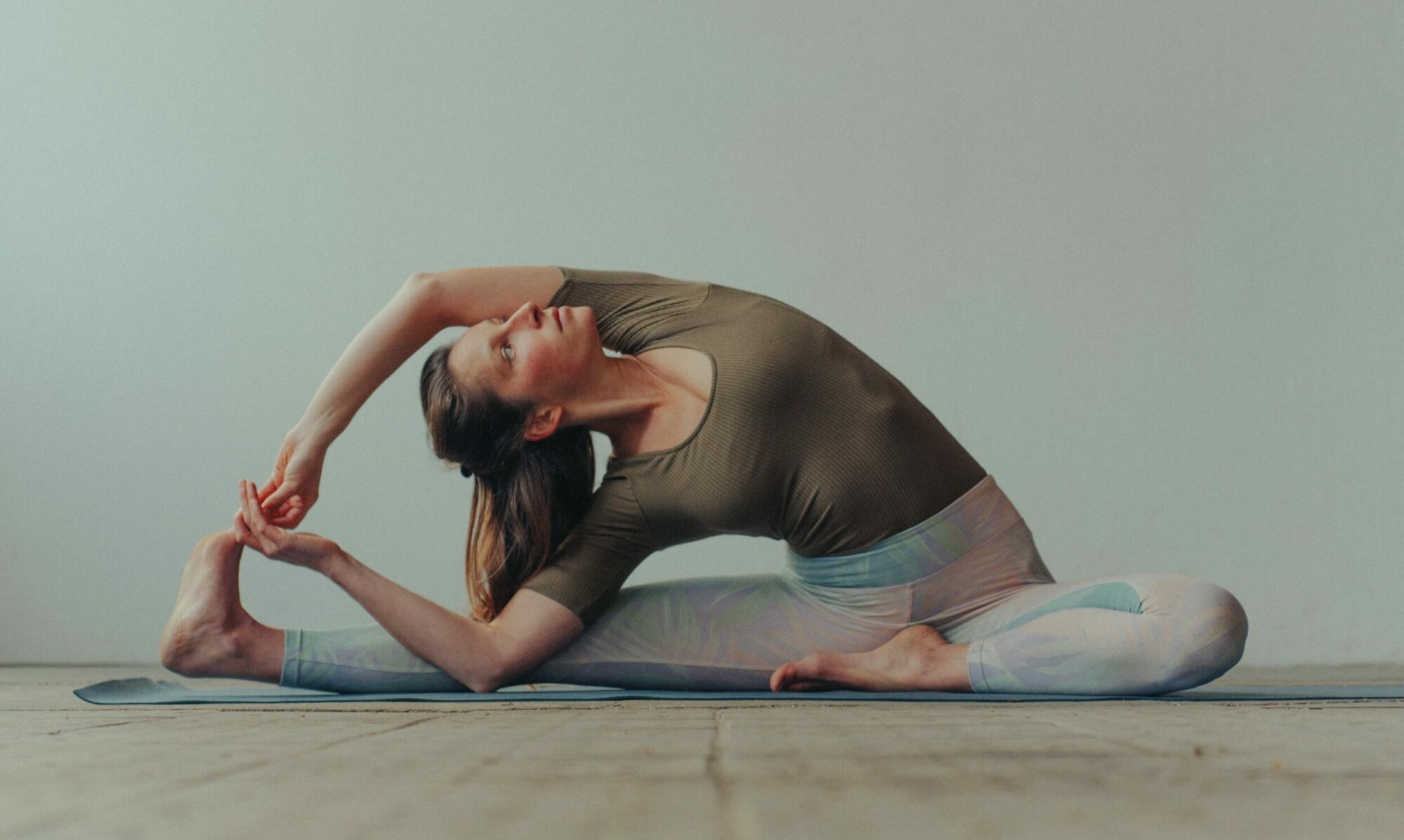A detailed description of the Iyengar Yoga practice, B.K.S. Iyengar himself and his career can be found at: B.K.S. Iyengar and his Iyengar style.
Brief overview of the practice:
One characteristic is the precision and exact alignment in the yoga positions – which is known as alignment . Many aids such as blocks, straps or blankets are used to optimize these postures. The teacher gives very precise instructions and corrects the student. Breathing plays a subordinate role, but is announced in the respective position according to Iyengar’s instructions.
Each class begins with standing postures. The standing postures are practiced intensively over the years, as Iyengar saw them as a basis for correct alignment of the body. This is followed by backward stretches, forward stretches, inversion postures or so-called regenerative postures.
Pranayama is usually taught separately from the physical exercises in special pranayama classes. However, observing the breath and some light pranayamas can also be included at the end of an asana class.
Discipline is another hallmark of the classes. You practise a few positions within an hour, as well as in weekly cycles, and align them as precisely as possible.
The teaching method is standardized, i.e. the basic principles are taught in the same way worldwide, even if the sequence of exercises can be put together by the students themselves.
It is all about perfection in the physical, a spiritual claim in the lessons is practically not recognizable.
A concrete impression of how B.K.S. Iyengar himself taught:
Practice of a student:
Today, Iyengar Yoga is taught in more than 70 countries and is therefore widespread throughout the world.
Representative in Germany:
Michael Forbes, “Senior” Iyengar teacher in Munich
RitaKeller, “Advanced Junior” Iyengar teacher in Cologne
IyengarProfessional Association Germany in Berlin
Continue to the next yoga style: Jivamukti yoga
